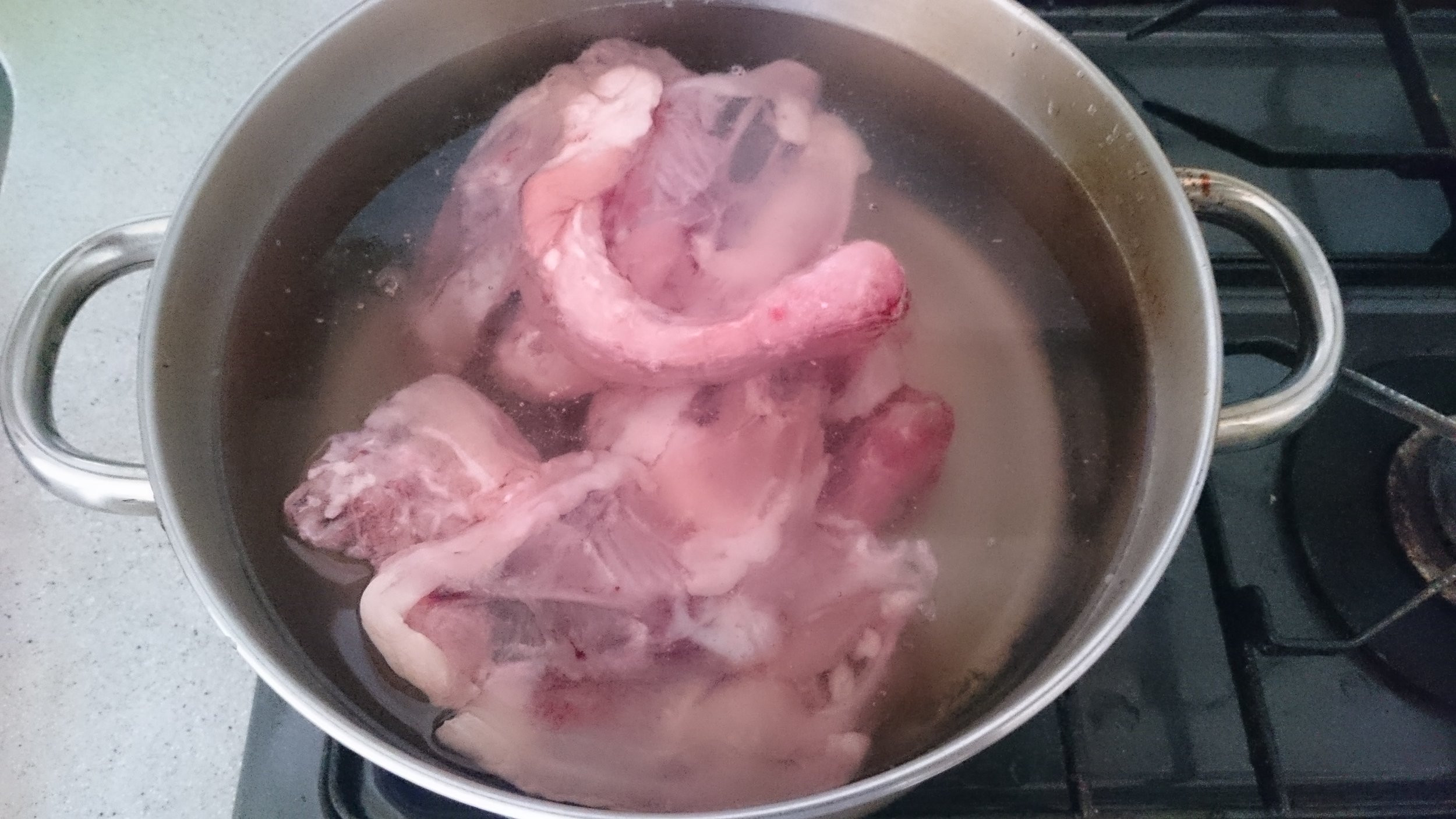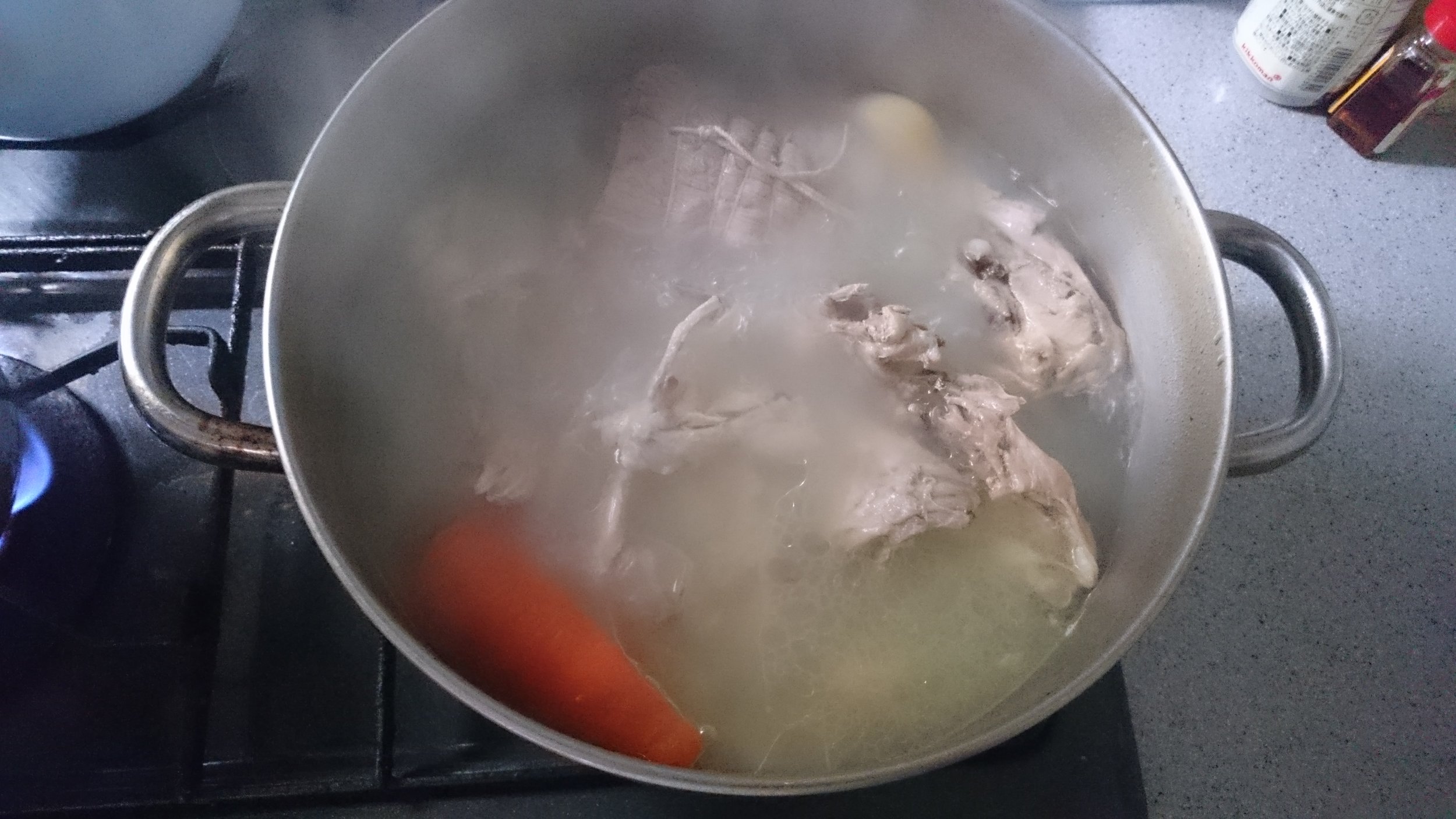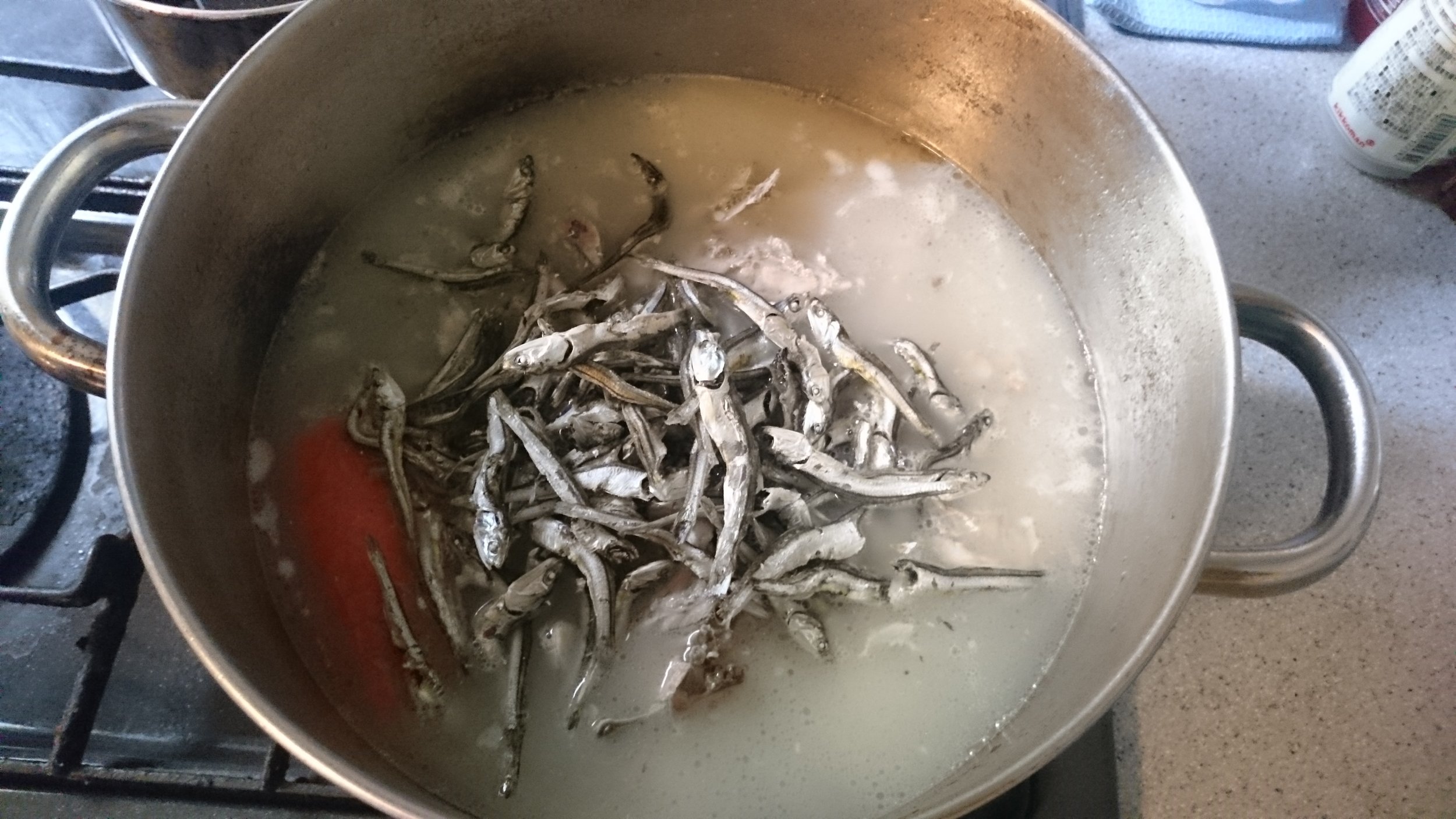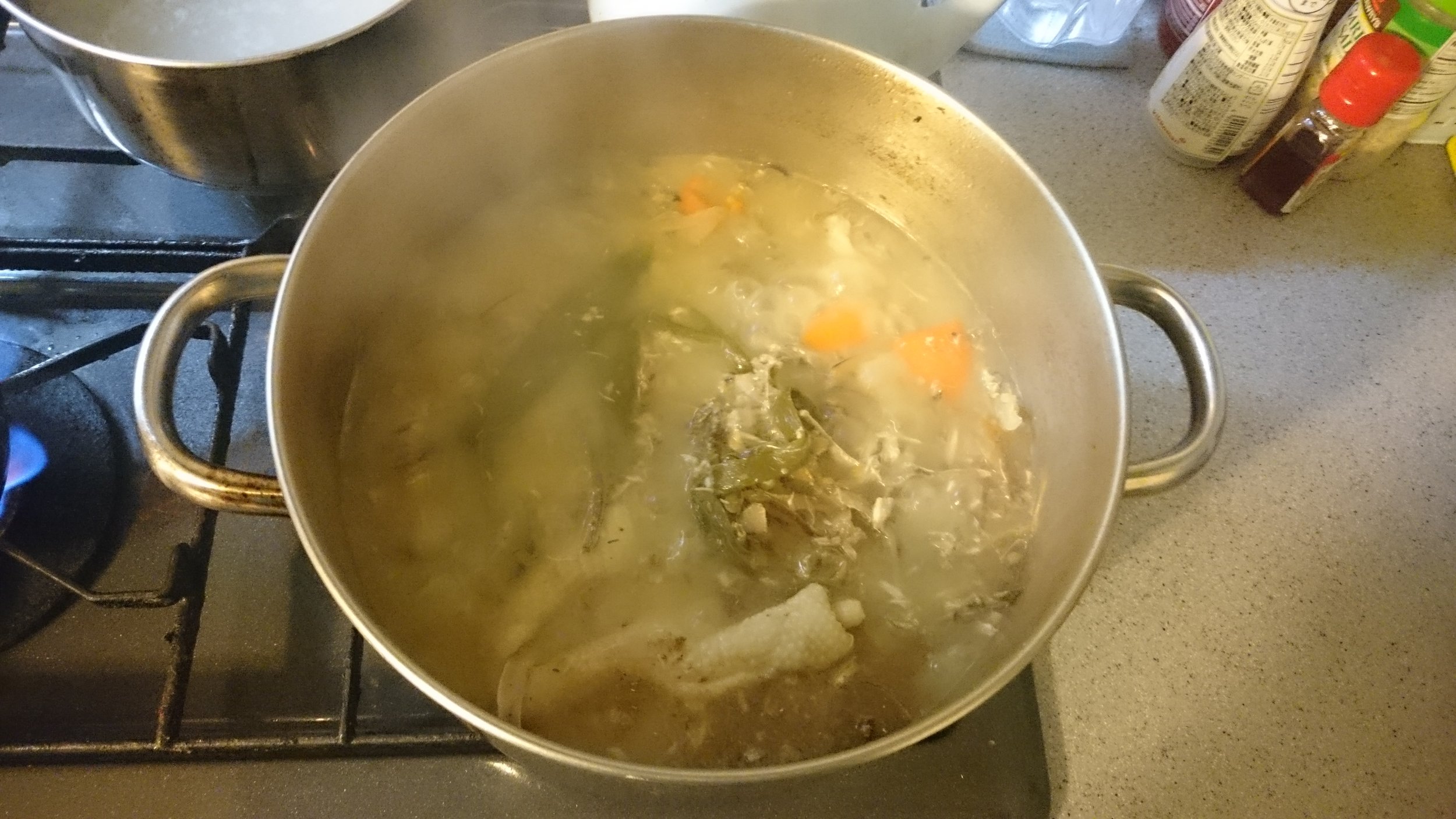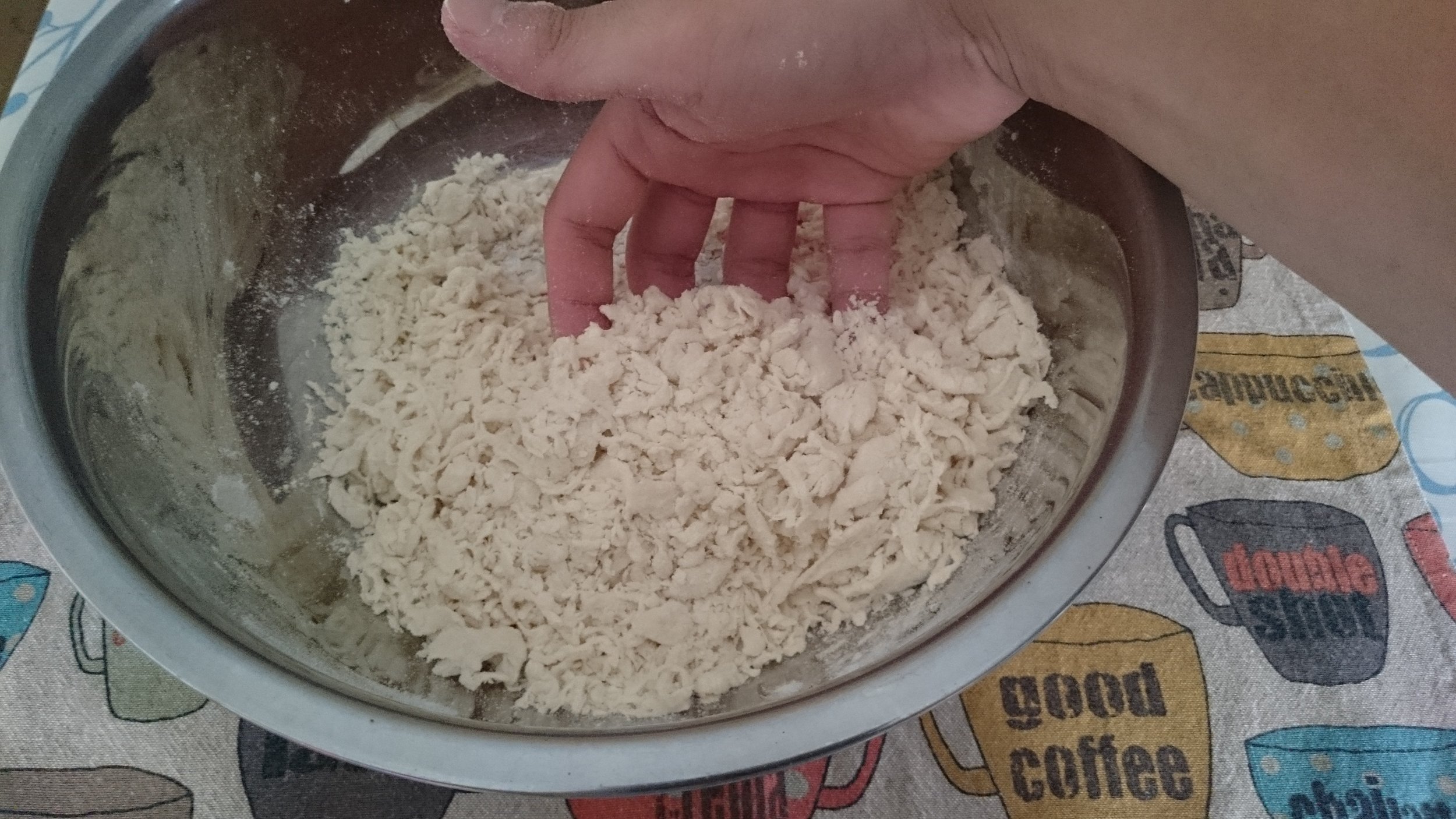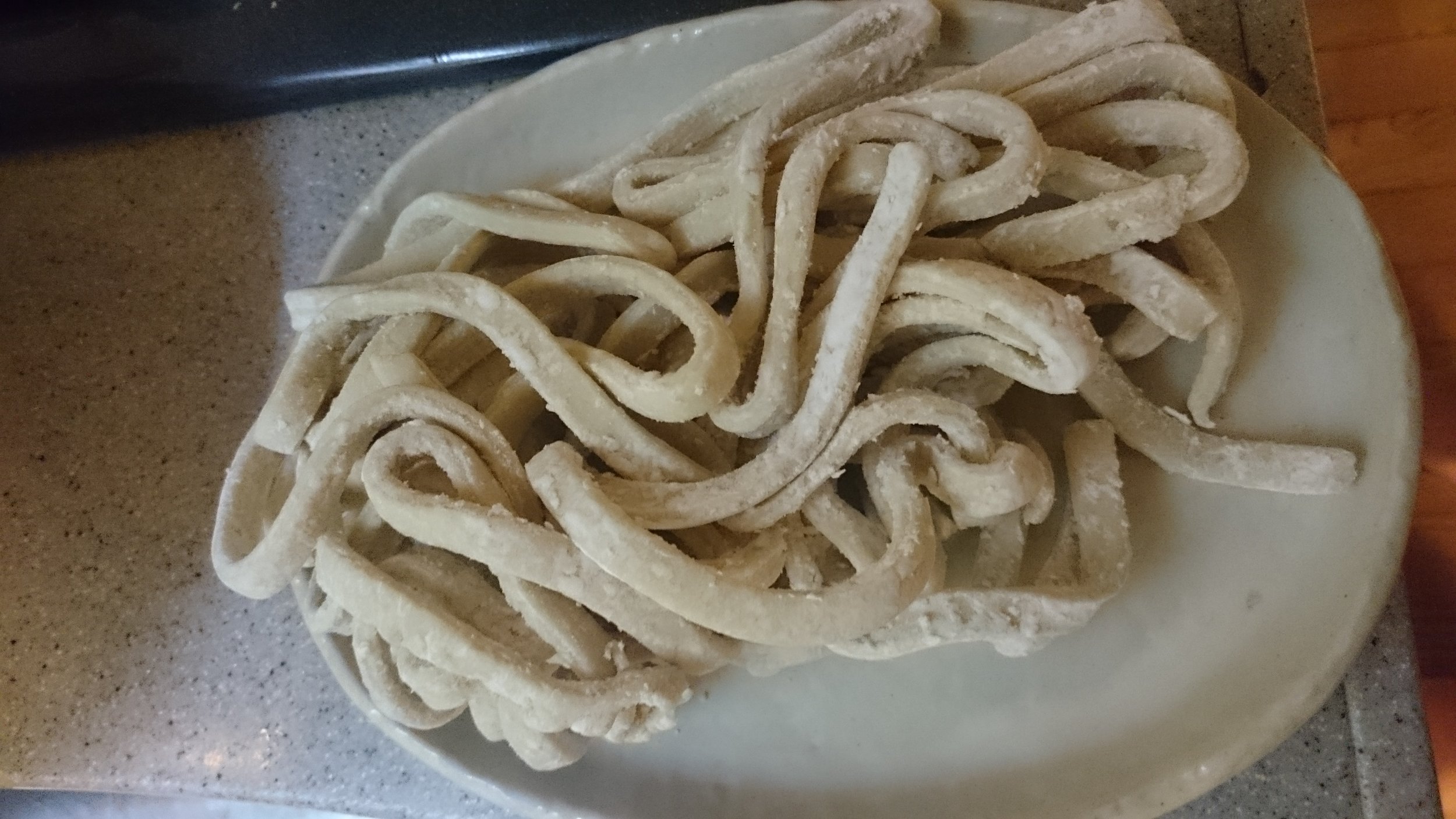How to Make Menya Itto Style Tsukemen
Bear with me. As a huge fan of Menya Itto (fight me Tomida fans) I’m always craving the intense chicken and seafood broth of their Tsukemen, but dread the hour long commute and even longer wait once I get there. In an effort to get a semblance of their infamous Tsukemen, I embarked on an internet dive for any information I could find about their delectable soup. The culmination of this research is here in this recipe. This is far from perfect, the noodles are WAY thicker than I wanted, but the soup is as close as I could get it (in my opinion) without having the actual recipe on hand. Without further ado, here is my take on Menya Itto “style” Tsukemen. (Ingredients Below)
First off you’ll need a couple chicken carcasses which you can get from your local butcher shop. Here in Japan its quite common in supermarkets so I was easily able to find mine there. You’ll need to get rid of any bloodlines, silver skin, and any excess impurities on the bones by boiling them in water for about 4-5 minutes. Empty out your pot and give your bones and pot a quick wash. Clean the inside to get out any hardened blood, silver skin, and really anything that easily washes off with a quick scrub. Once you have your clean bones and carcass, fill your pot back up with water and throw them back in. I opted to put my pork for the char siu topping in as well. Bring the water up to a boil and keep it on high for 2.5 hours. For the first thirty minutes to an hour, scoop out any foam and impurities that rise to the surface of the broth. This will ensure you won’t have any residual bitterness in the soup.
While you wait for your soup to simmer, I started preparing the marinade for my char siu. In a small pot I combined half a cup of water, half a cup of soy sauce, quarter cup of sake, quarter cup of mirin, a few cloves of crushed garlic, and a few slices of ginger. I let this simmer on low for about thirty minutes. After about 2.5 hours, I scooped out my pork, threw it in to a ziplock bag with my marinade, and let it marinate in the fridge until I was ready to prepare my bowl. To the soup I added carrots, an entire head of garlic, about two inches of ginger without the skin, and the green portion of a leek. I left this on medium high for another hour.
After letting the broth simmer for another hour I added about half a cup of water (as the broth will have reduced substantially at this point) as well as a healthy handful of Niboshi (dried sardines) and Katsuobushi (dried bonito shavings). Turn your stop down to a medium low at this point as the dried fish are quite sensitive to heat and over heating will draw a bitterness out of the fish. I let this simmer for about 45 minutes before straining the broth of all the remaining solids. Be sure to use a metal colander and drain as much of the broth from the solids as possible.
Next I began making the noodles. First you’ll want to measure out about 5 grams of both salt and kansui (sodium carbonate) to 120 ml of water. From what I gather, sodium carbonate is not readily sold in supermarkets outside Japan. As a substitute to kansui, bake baking soda on 200 degrees Fahrenheit for about an hour. From what I read, this will give you similar results. Once the salt and sodium carbonate is diluted in the water, carefully add the liquid little by little to 300 grams of flour. What you want to do is add the water slowly so you end up getting small balls of flour (as pictured below). Once you have added all of the water to the flour, knead the dough together and put through a pasta maker starting from 0 and work your way up to a 5 (on pasta makers with settings up to 10). I had set mine to 3 thinking I wanted thicker noodles like at Menya Itto and I realized after cooking that it was WAY too thick. Cut as desired; either with your pasta maker or by hand with a knife.
For the tare I combined a cup of soy sauce, half a cup of sake, half a cup of mirin, quarter cup of water, couple cloves of garlic, a few slices of ginger, a handful of Katsuobushi (dried bonito shavings) and a handful of Niboshi (dried sardines). (A quick google search showed that you can pick up both the dried bonito shavings and dried sardines at your local Asian market, but if you’re without an Asian market in your area, they are sold relatively cheap on Amazon.) I let this mixture simmer for about 45 minutes before straining out the solids. Next I slowly fried chicken skin on medium low until the fats and oil were extracted from the skin. I combined my previous mixture with the oil from the chicken skin for about five minutes before putting it to the side for later.
If you’ve ever been to Menya Itto you know that their broth is thick, fatty, and really overpowering (as it should be with Tsukemen). In order to balance out the fattiness of the soup they include chicken meatballs seasoned with yuzu citrus (traditional Japanese citrus fruit). Of course, as I wanted to make it as close to Itto as possible, I embarked in creating these chicken meatballs as well. First I combined 400g of minced chicken, one whole egg, 4 tablespoons of corn starch, couple pinches of salt, zest of half a yuzu, and the juice of half a yuzu (juice of a quarter of a lemon could be substituted if you can’t find yuzu in your area). I kneaded the mixture together until I got a paste and added a tablespoon of soy sauce. Mixed again and I made small bite size meatballs and boiled them in salt water. This should yield about 10 chicken meatballs. Next I cut my char siu to size, cut up some green onions, and thinly cut my yuzu skin (with a little zest for good measure).
Finally to prepare my bowl. First I boiled my noodles for about 5 minutes (5 minutes as I made mine too thick. I would periodically check on your noodles to make sure you don’t over cook them). Next I heated about a cup and a half of soup with about 1/3 cup of my tare. As it came to a boil I added my chicken meatballs to reheat them in the Tsukemen broth and drained my noodles. After a quick wash of my noodles under cold water I plated my noodles, placed my char siu over the noodles, ladled in my soup to a bowl, and added my green onions and yuzu peel to the soup.
Besides my obviously too thick noodles, I would consider this an overwhelming success. The soup wasn’t as dense in flavor as Itto, as I probably should have used multiple chicken carcasses for the broth, but was as close as I could have imagined making it. The richness from the chicken paired incredibly well with the umami of the Niboshi and Katsuobushi and the sweetness from the vegetables. The char siu was tender, but still had enough bite that I was eating meat and the chicken meatballs with yuzu helped cut through the fattiness of the soup. If you have time to create an incredibly arduous, but delicious Tsukemen, I highly recommend giving this recipe a try. The only thing I would change was possibly increasing the time I let my broth boil down, or adding in more chicken carcass. Good luck!
Ingredients
Soup and Toppings
- 2 Chicken Carcasses
- 500g of Pork Shoulder
- 400g of Minced Chicken
- 1 Carrot
- Green Onions
- Leek
- 2 Whole Garlic
- Knob of Ginger
- 1 Yuzu (or Lemon)
- Sake
- Shoyu
- Mirin
- Corn Starch
Noodles
